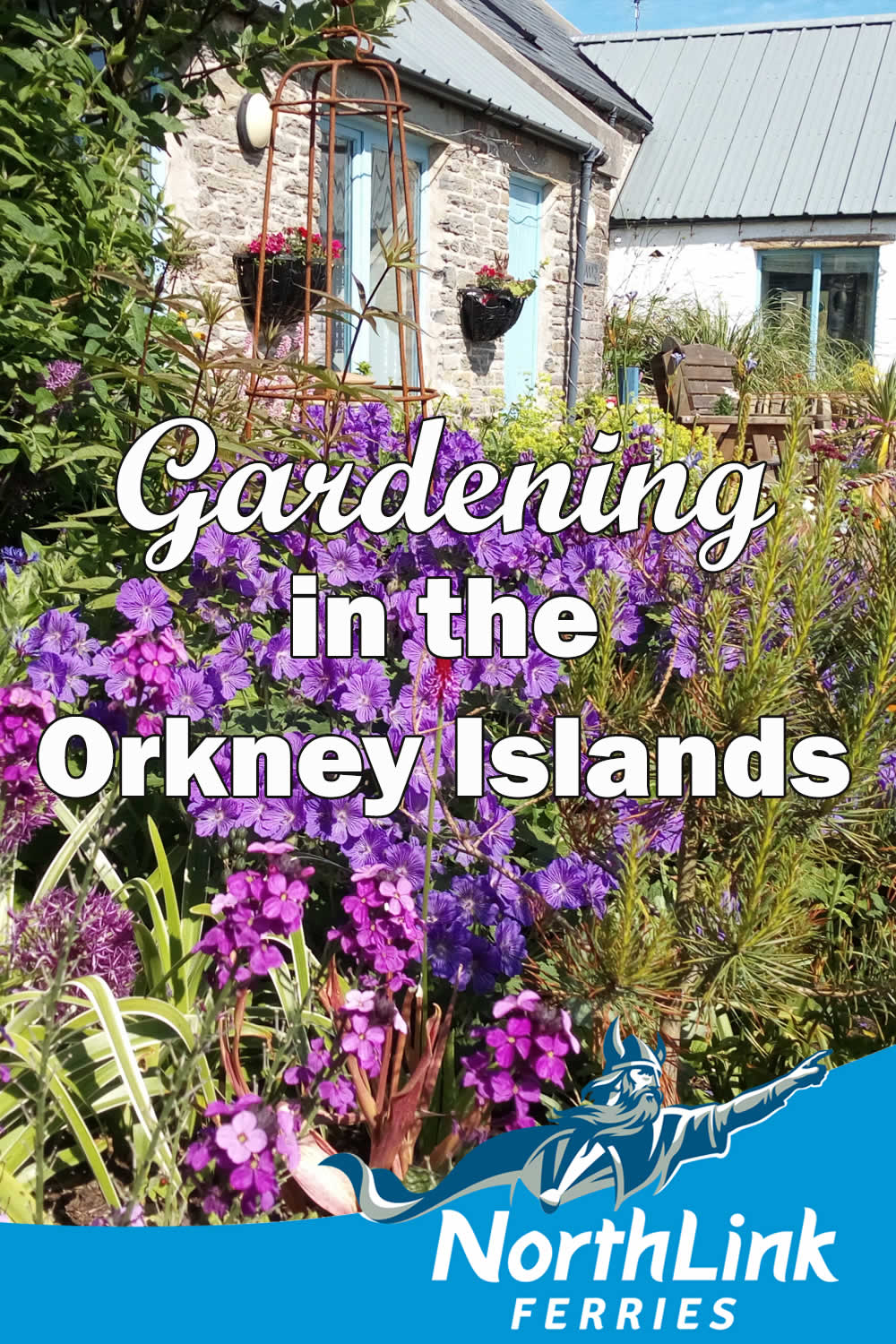Gardening in the Orkney Islands
Gardening in Orkney can sometimes be considered a struggle. The constant battle with the wind can make it difficult to establish gardens. However, there are a good number of gardeners in the Orkney islands who persevere with great results. 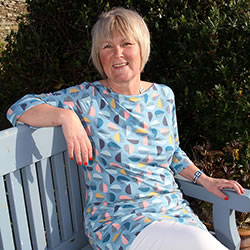 Caroline Critchlow has designed award winning gardens along with her own and is the resident gardening guru on BBC Radio Orkney.
Caroline Critchlow has designed award winning gardens along with her own and is the resident gardening guru on BBC Radio Orkney.
I try to garden with the wind, but equally I try to mitigate the wind where I can. I put up wind fences until things get established. Another option is to use thug-like plants like Alchemilla Mollis and plant it next to a more precious plant to shelter it.
We spoke to Caroline to find out a bit more about gardening in Orkney.
Q. What do you love about gardening?
A. People often say to me, “you must really love gardening” but quite often I don’t actually enjoy the process of gardening, especially if I feel weighed down because I’ve got so much to do! However, what I do love is the effect of it – when you sit back and you look, and you’ve created a thing of beauty.
Interestingly, since I’ve moved from my big garden next door to a smaller garden, I really miss the doing in the garden. So I think on reflection I do miss the cleaning out the weeds and the contact with the plants. You can’t have a relationship with a garden if you don’t do some of it yourself. Of course, you can have help in if you want, though I don’t. I find actually getting your hands in the soil really helps to clear your mind.
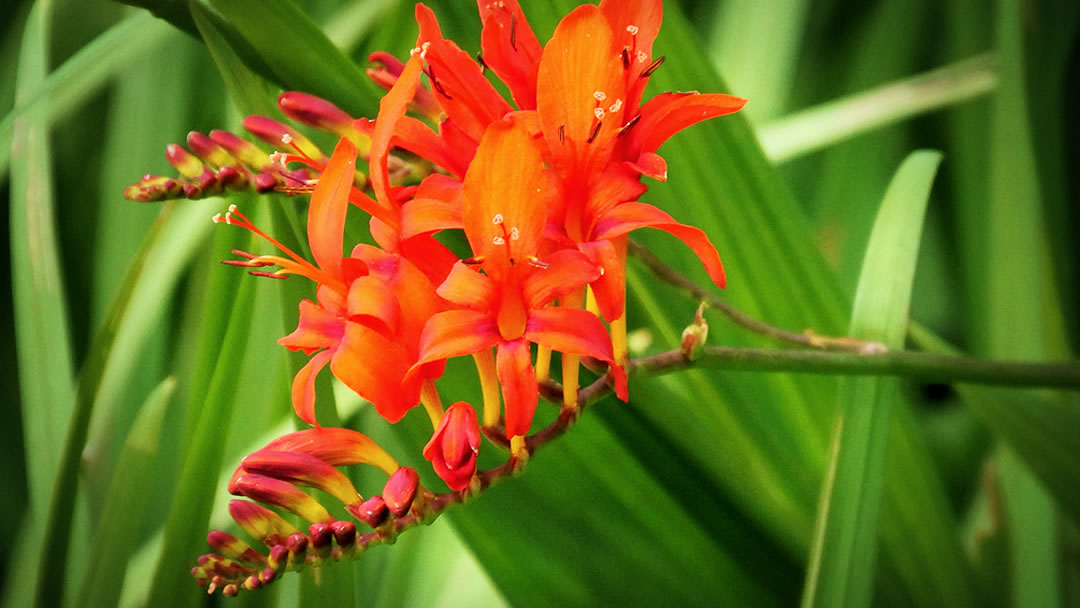
Q. Can you tell us a little bit about your garden?
A. A lot of people said when I left my previous house, the Quoy of Houton, “How could you leave your garden, it has won so many awards and it’s such a thing of beauty”, but I found it quite easy because I do like a new challenge.
My current garden is a new project and I do like a project. This has certainly been one because prior to us moving in it was a holiday cottage and a car park. Prior to that, it would have been a stack yard, so this ground has been impacted down probably since the 1700’s. So, we’ve had to get diggers in, and we have to use a pickaxe to create areas to put my plants in. I’m constantly replenishing the soil. I’m trying to add lots of nutrients and vegetable matter to the soil. It’s an ongoing project and I’m loving it.
It’s been a terribly windy winter, and I just want everything to start growing. It’s March right now and I feel quite impatient. As soon as the sun shines, I’m out changing things around, digging snowdrops up and replanting them. However, then the weather comes in again, and that can be a frustration!
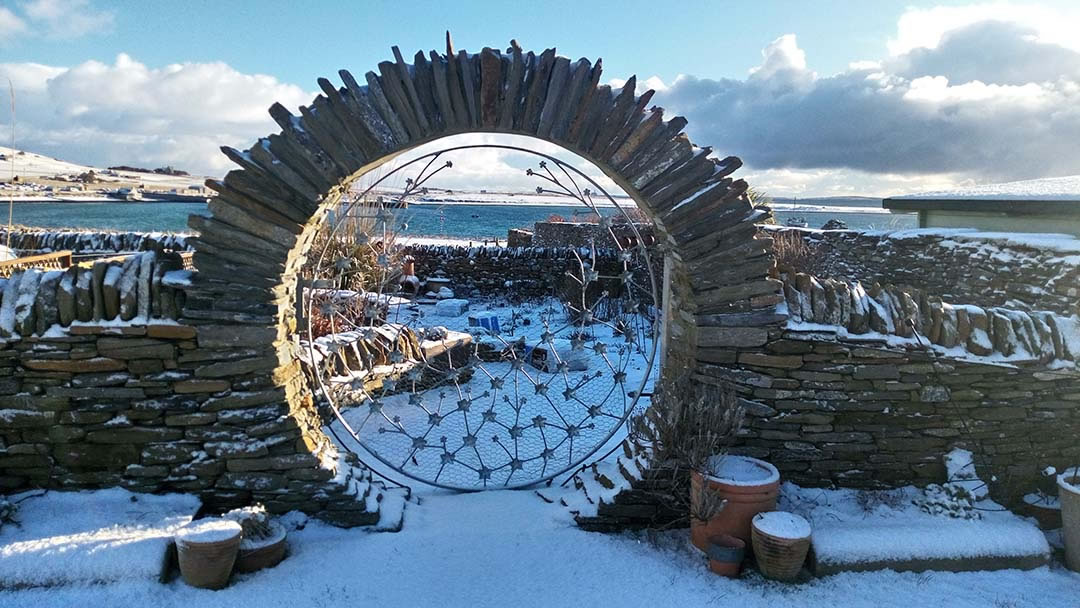
Q. What piece of gardening are you most proud of?
A. I think the geranium garden with the moon gate. Fiona Smith from Kierfiold House and I have almost saved those geraniums because some of them were very elusive and hard to get hold of again. Fiona in particular has been very diligent about getting the collection together.
They were bred by Alan Bremner, a local man. Some of them have got RHS Golden merits which is a very coveted award, only the very best plants get that. We have a man on the island who’s bred these over the last half century.
To have as many of them in one small space makes a fantastic show when they bloom. Geraniums are brilliant perennials. I think that’s the bit that I get most pleasure out of, even though it’s only a small triangular shaped piece of garden. I can’t wait to get back in there!
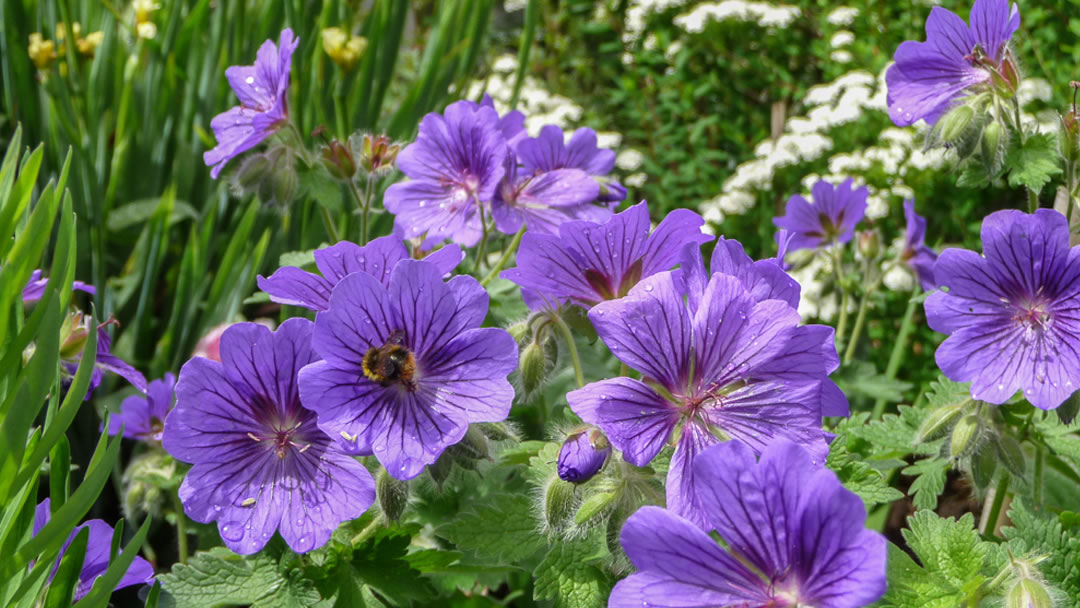
Q. What plants are best suited to the Orkney climate?
A. We are so lucky in some respects as we don’t really get cold weather so there’s an awful lot going for Orkney gardeners. The majority of gardens here have the most marvellous soil, a lovely clay sand mix. If you try to garden in the chalk lands, that’s a real fight. We rarely get droughts, we’re not short of water so we are lucky in many respects. However the big downside of gardening here is the wind, and it’s the salt wind.
When you are choosing a plant for up here – people will say to you “oh Lavender is a great coastal plant” but actually they’re not up here because it’s quite cold in the summer. This isn’t Provence where lavenders bloom, and they don’t like the rich soil we have here. So they don’t do very well here, but you can get a Catmint or a Nepeta to grow if you get it growing on the south side. In my previous garden the Nepeta would grow on the south side of the pond but it wouldn’t grow on the north side of the pond!
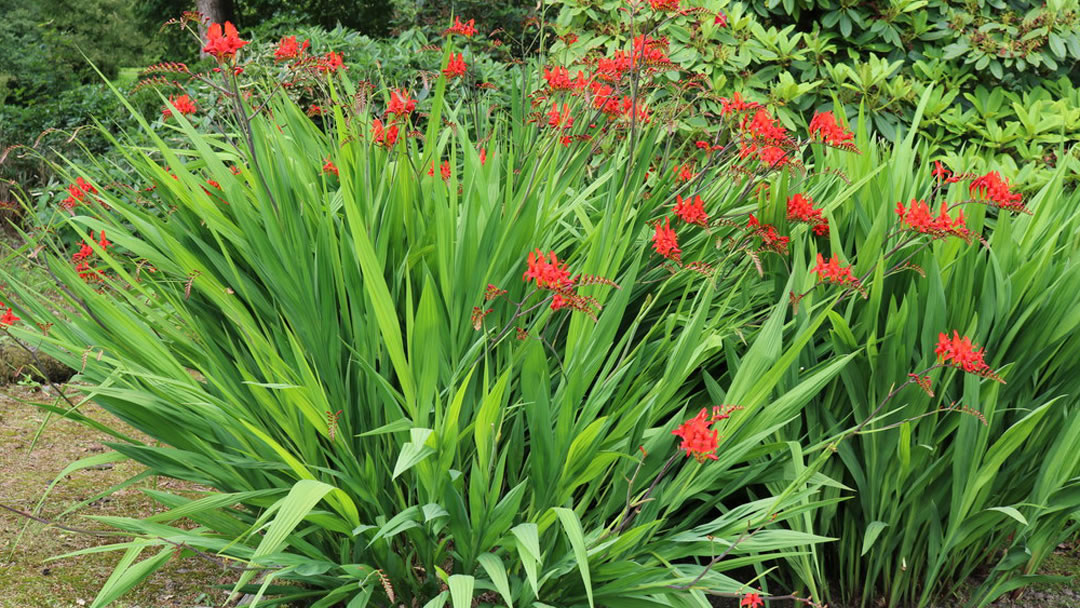
You have to be very watchful of what you put in. I have a group of plants that you can’t go wrong with. Alchemilla Mollis, which can be a thug but if managed, can be a thing of great beauty. Centaurea which is the perennial silver leafed cornflower, the big oriental poppies grow incredibly well and of course Crocosmia. People here in Orkney think of Crocosmia and they shudder, but if you talk to someone from Surrey, they can’t grow a Crocosmia!
There are different variations, so if you’ve a ‘Lucifer’, the tall red one, that one is not as much of a thug as the common orange one is. You can get a lovely little yellow one called ‘Honey Angel’ which is perfectly manageable. So don’t just settle for one type of plant – different types of Crocosmia might be better.
Hemerocallis day lily thrive up here, Kniphofia ‘Red Hot Pokers’ are great, and they grow wild by the side of the road! Primroses are lovely too. An amazing number of plants do well here. Just with that small number of plants you can make a garden, I would put my neck out to say, anywhere in Orkney.
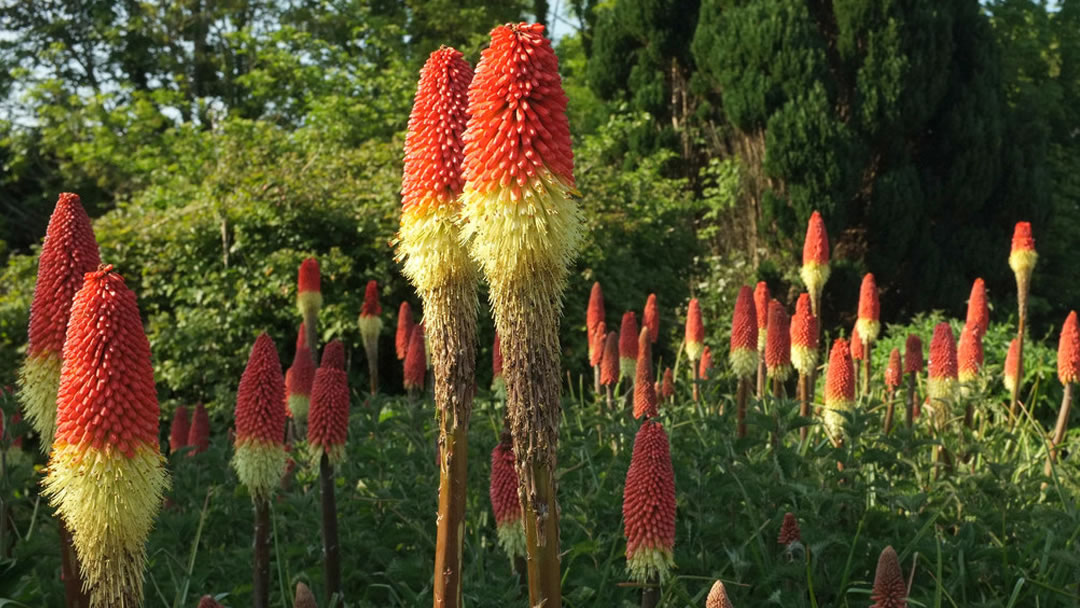
Q. How do you deal with the wind in Orkney?
A. The wind is an issue, definitely and it’s not just an issue in the winter. When I first designed the Quoy garden I designed it to be entirely cut down in the winter, so I didn’t have to worry about it. That’s a good option to think about.
Things like shrubs struggle. Viburnum Tinus which is a great shrub, you can see one in a really sheltered part of my garden. However it’s just a shrivelled brown mass after the wind this winter. Pittosporums are supposed to be a really good coastal plant, but they just can’t cope with the wind here. They have to go into a sheltered space.
So, I try to garden with the wind, but equally I try to mitigate the wind where I can. I put up wind fences until things get established. Another option is to use thug-like plants like Alchemilla Mollis and plant it next to a more precious plant for shelter.
When you plant in Orkney you must plant very close together. You’ve almost got to plant like you want it to look like a Chelsea Garden. Then start taking plants out later. This is counter intuitive to how most gardens are designed down south because they get overcrowded. Here though, the plants give shelter to each other.
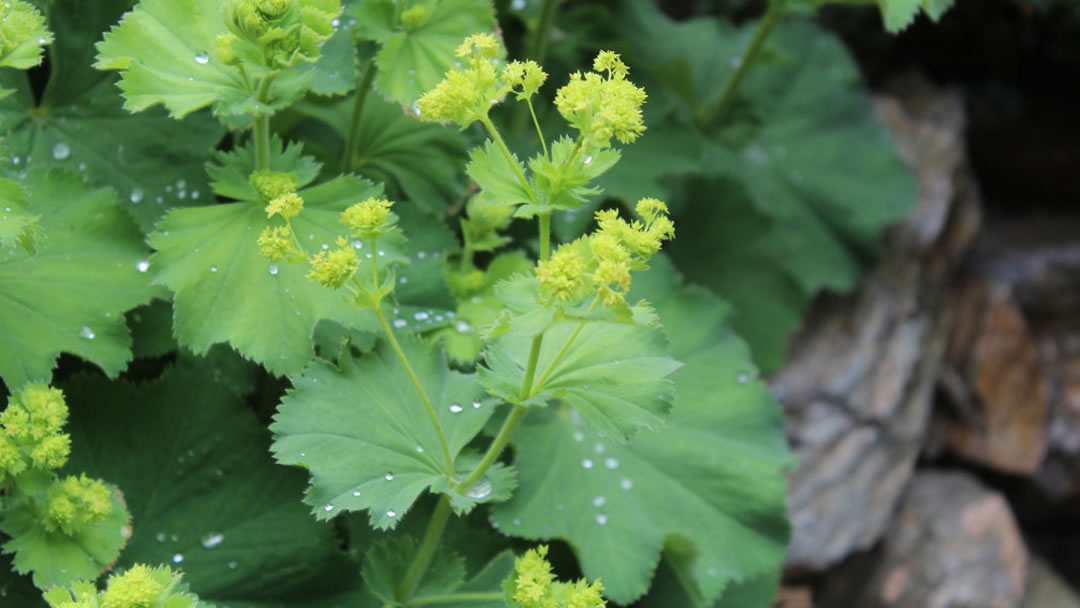
Evergreens aren’t always an option as they can lose all their leaves in a bad storm, Escallonia is an evergreen, and if you get a bad winter you can lose every leaf! So, we use hard sculptural things like for example, my husband Kevin has just built this series of stone chessman, two great big stone pawns and a big stone rook. Now they give shelter and look good in the winter. You have to look at the wind direction and find ways to work with that. Some people just place a standing stone, we are lucky as we have lots of stone up here, then they plant in the lieu of the standing stone.
You want to garden to mitigate the wind but equally a lot of houses in Orkney have the most fantastic views. In the past is people built a willow belt around the edge of their gardens. Willow is very resistant to the wind and provides good shelter but as soon as you do that, you’ve lost the view!
I always want to garden to the view, so I haven’t used willow, also because when willows get larger they get blown out and need to be cut down. Putting a shelter belt in is not an easy option. Be careful when selecting a shelter belt plant. Both Willow and Fuchsia are thugs and can take over your garden and need to be carefully controlled.
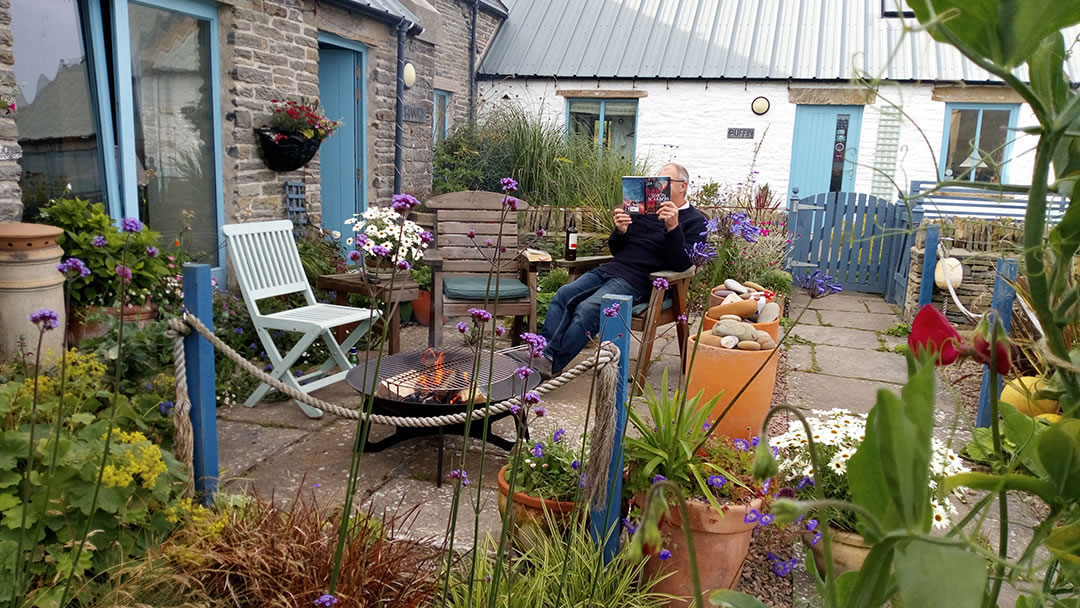
Q. How do you decide what parts of your garden to leave wild?
A. Because I haven’t got such a big garden now, I don’t have as much wildness as I would like. So I mitigate that by putting in lots of bee-friendly plants. You don’t have to have a wild garden to be good to nature. Don’t use chemicals. I don’t even use slug pellets now. I don’t have an area of nettles, but I do have a species of plant which is part of the nettle family but it’s actually a perennial and it’s not a thug, it’s got a blue nettle flower on it. So it’s similar to what you might expect from a wildflower garden.
Marguerite daisies grow wild in Orkney, but you can have those in your garden, and they’ll look great in a herbaceous border. Though I don’t have a wild area, I have lots of water which is very important for wildlife in a garden. I then plant perennial plants which give as much pollen as possible to the bees throughout the year.
Ivy is really good for the winter, so I planted some ivy on my wall and a lot of Verbena Bonariensis, which is an annual. It is quite hard to grow in Orkney but it is amazing for the bees. Things like Buddlejas are not a wild plant but they are fabulous for pollinators. So you don’t just need to sew a pack of wildflower seeds, and in truth, making a wildflower garden is actually quite difficult.
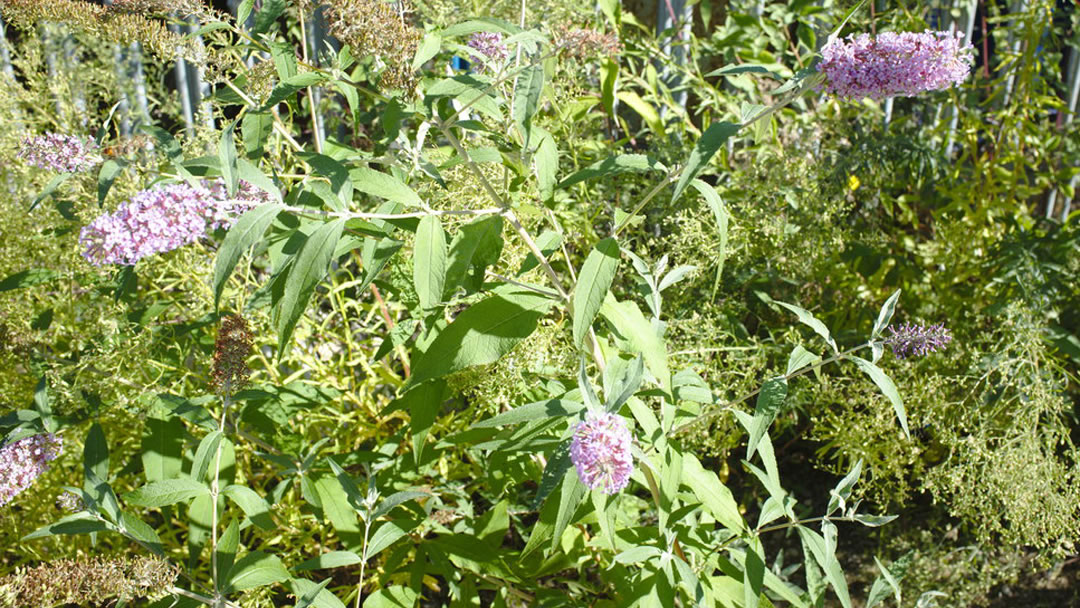
Q. What equipment do you think everyone should have?
A. A hand trowel, and a small hand fork. I have friends who swear by mattocks, they’re a bit heavy handed for me. For me here a pickaxe is essential. I’m not part of the ‘no dig’ enthusiasts club but I do think in the past we have dug our soil too much. I am much keener now to use smaller tools rather than going around digging over the garden and double digging the garden. I’d much rather put a layer of mulch on.
I also recommend a pair of secateurs, a garden fork and one of those long levers which you put in the ground to hook weeds out. The other thing which is brilliant is a pair of sheep shearing sheers. They are great for cutting down your perennials in the autumn and early spring. You can buy them from your local agricultural merchants, and they get used a lot!
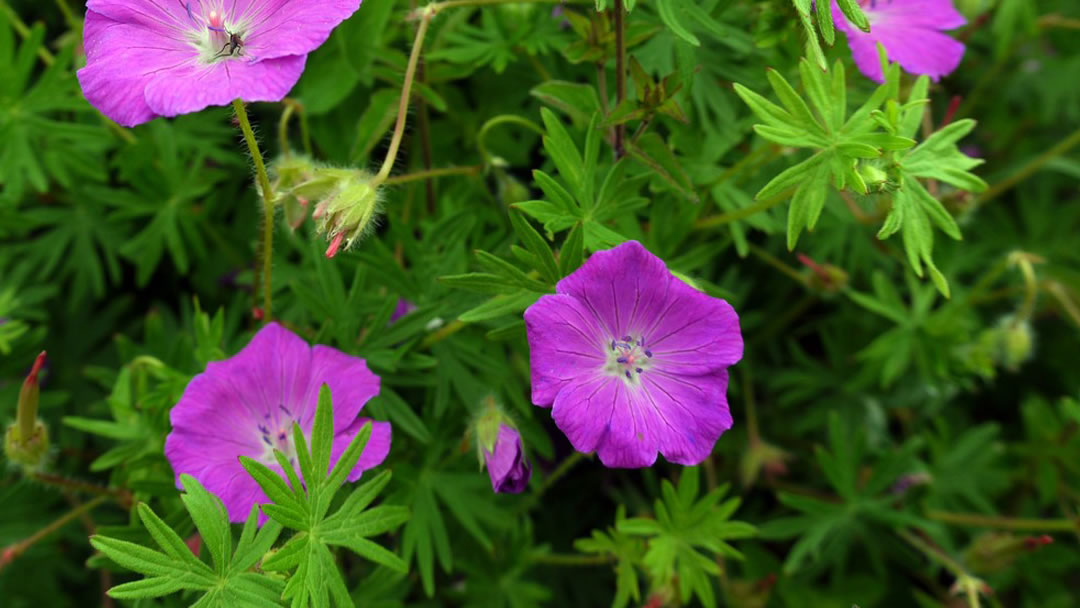
Q. Is there one thing you wish everyone knew about gardening?
A. I think it would be that everybody can do it. I design gardens and folk often say “I’m just not a gardener, I can’t make things grow.” However, that’s just wrong – everybody has a gardener in them. It’s just such a shame that a lot of us don’t discover the gardener in us until we retire because it does take time. Even if you have a few small pots or some houseplants, there’s a gardener in everyone. We all have a green finger!
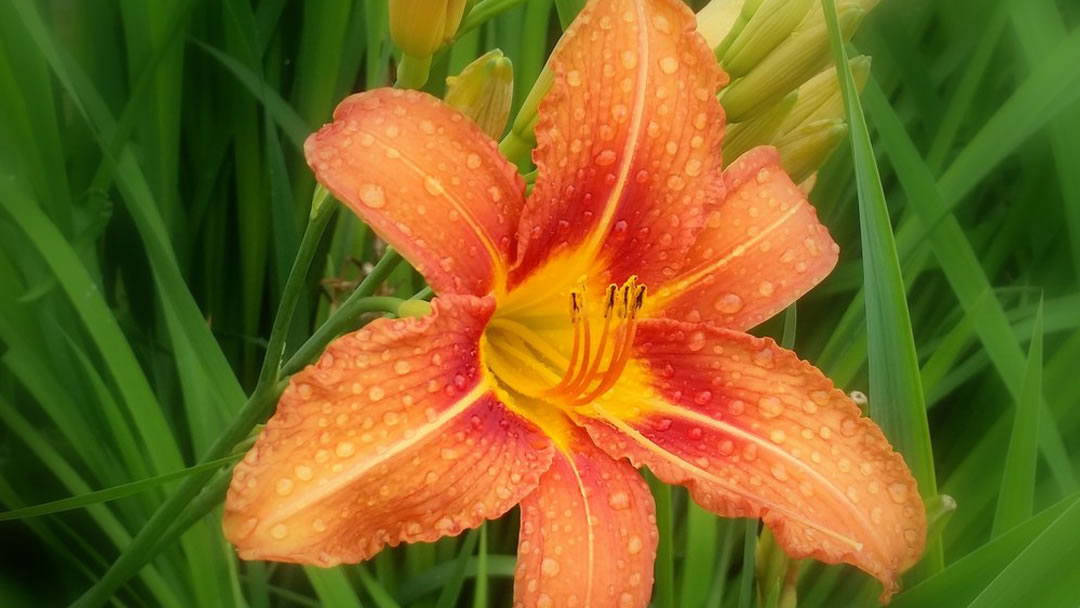
Q. If there was one piece of advice you could give about gardening in Orkney, what would it be?
A. Never say no to a plant. When I first came up here I brought up £500 worth of plants underneath a McAdie & Reeve lorry. When I unpacked them I remember someone saying to me, “You’ll never grow that lot up here.” I thought, “you just watch me!” I probably lost 50% of it, but I say, always give a plant a try.
Remember there’s a right plant for the right place and just because others have had success growing it on the UK mainland it doesn’t mean it will work in Orkney. Likewise there will be something you can grow here that doesn’t work down south. So don’t try and replicate UK mainland gardens, work with the weather, work with the climate, and your garden will be a joy!
 By Victoria Dixon
By Victoria DixonOrkney and Shetland fanatic, likes to capture life through a lens, loves creating, eclectic taste in music, enjoys being a Mum; would secretly love to be a star of the West End!
Pin it!